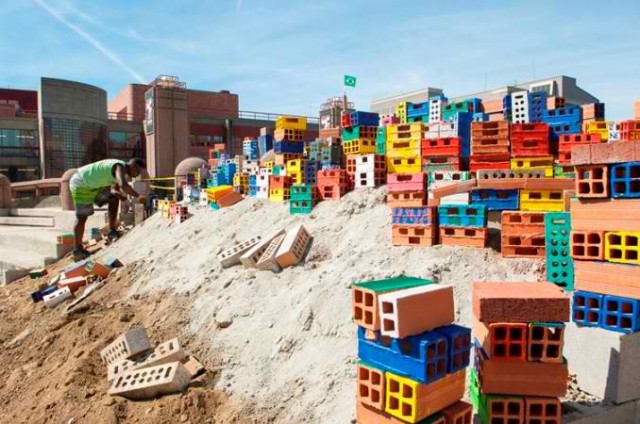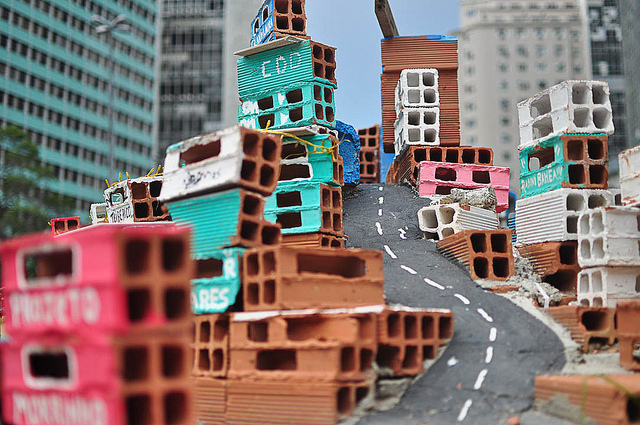
There are favelas in Queens! Well…sort-of. The iconic Brazilian shanty-towns are making an appearance on the campus of Queens College in Flushing – as a huge set of three playful dioramas made from painted cinderblocks, toys cars, dolls, and bric-a-brac. The installation is the first U.S. showing of the Projeto Morrinho or “Little Hill Project” and was brought to the borough by the suggestion of John Collins, director of Latin American Studies for the “Year of Brazil,” a cultural, political, and artistic exploration of the country at Queens College, CUNY.
Projeto Morrinho started out in 1998 as a game played by the local youth of the Laranjeiras neighborhood of Rio de Janeiro to escape violence surrounding their community. Ever since the installation has travelled Brazil and internationally, even making an appearance at the 52nd Venice Biennale. The goals of the project are to inspire dialogue and transform negative perceptions of favelas – highlighting the creativity and sense of community found amongst its residents. These are the realities that are absent from popular representations of favelas in the media.

Built upon sand and dirt mounds and set against the Manhattan skyline, participants of the installation are free to play with the toys and imagine themselves as residents of the miniature favelas, rolling around motor cycles and assuming roles of police officers, pedestrians, and yes even drug dealers.
Go check it out!! Projeto Morrinho is on view throughout the year. The main installation can be viewed at Rosenthal Library Plaza on the QC Flushing campus. Location: 65-30 Kissena Blvd.| Queens, NY 11367-1597
—
For other inspiring examples of artists and urban planning groups who use toys to explore city issues check out: the Center for Urban Pedagogy’s Envisioning Development toolkits and urban planner James Rojas’ Place-it Project.